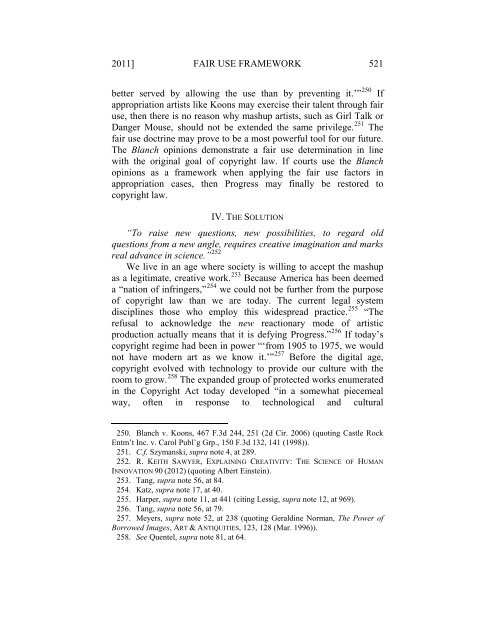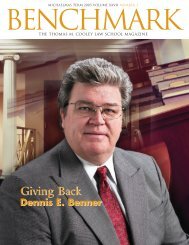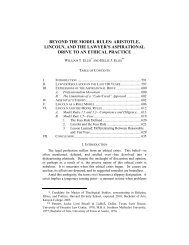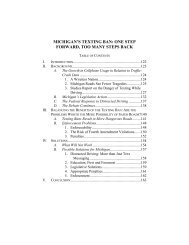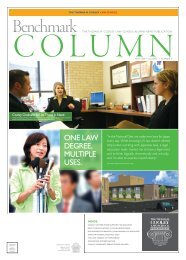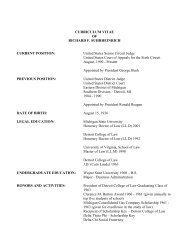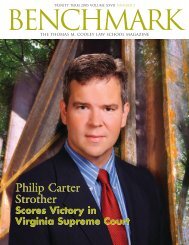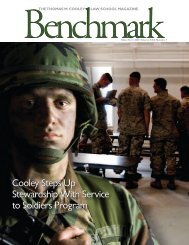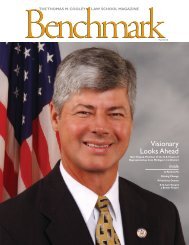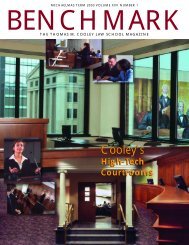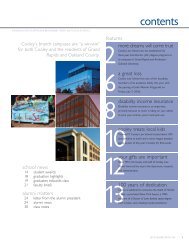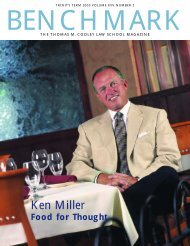Blanch It, Mix It, Mash It - Thomas M. Cooley Law School
Blanch It, Mix It, Mash It - Thomas M. Cooley Law School
Blanch It, Mix It, Mash It - Thomas M. Cooley Law School
Create successful ePaper yourself
Turn your PDF publications into a flip-book with our unique Google optimized e-Paper software.
2011] FAIR USE FRAMEWORK 521<br />
better served by allowing the use than by preventing it.’” 250 If<br />
appropriation artists like Koons may exercise their talent through fair<br />
use, then there is no reason why mashup artists, such as Girl Talk or<br />
Danger Mouse, should not be extended the same privilege. 251 The<br />
fair use doctrine may prove to be a most powerful tool for our future.<br />
The <strong>Blanch</strong> opinions demonstrate a fair use determination in line<br />
with the original goal of copyright law. If courts use the <strong>Blanch</strong><br />
opinions as a framework when applying the fair use factors in<br />
appropriation cases, then Progress may finally be restored to<br />
copyright law.<br />
IV. THE SOLUTION<br />
“To raise new questions, new possibilities, to regard old<br />
questions from a new angle, requires creative imagination and marks<br />
real advance in science.” 252<br />
We live in an age where society is willing to accept the mashup<br />
as a legitimate, creative work. 253 Because America has been deemed<br />
a “nation of infringers,” 254 we could not be further from the purpose<br />
of copyright law than we are today. The current legal system<br />
disciplines those who employ this widespread practice. 255 “The<br />
refusal to acknowledge the new reactionary mode of artistic<br />
production actually means that it is defying Progress.” 256 If today’s<br />
copyright regime had been in power “‘from 1905 to 1975, we would<br />
not have modern art as we know it.’” 257 Before the digital age,<br />
copyright evolved with technology to provide our culture with the<br />
room to grow. 258 The expanded group of protected works enumerated<br />
in the Copyright Act today developed “in a somewhat piecemeal<br />
way, often in response to technological and cultural<br />
250. <strong>Blanch</strong> v. Koons, 467 F.3d 244, 251 (2d Cir. 2006) (quoting Castle Rock<br />
Entm’t Inc. v. Carol Publ’g Grp., 150 F.3d 132, 141 (1998)).<br />
251. C.f. Szymanski, supra note 4, at 289.<br />
252. R. KEITH SAWYER, EXPLAINING CREATIVITY: THE SCIENCE OF HUMAN<br />
INNOVATION 90 (2012) (quoting Albert Einstein).<br />
253. Tang, supra note 56, at 84.<br />
254. Katz, supra note 17, at 40.<br />
255. Harper, supra note 11, at 441 (citing Lessig, supra note 12, at 969).<br />
256. Tang, supra note 56, at 79.<br />
257. Meyers, supra note 52, at 238 (quoting Geraldine Norman, The Power of<br />
Borrowed Images, ART & ANTIQUITIES, 123, 128 (Mar. 1996)).<br />
258. See Quentel, supra note 81, at 64.


